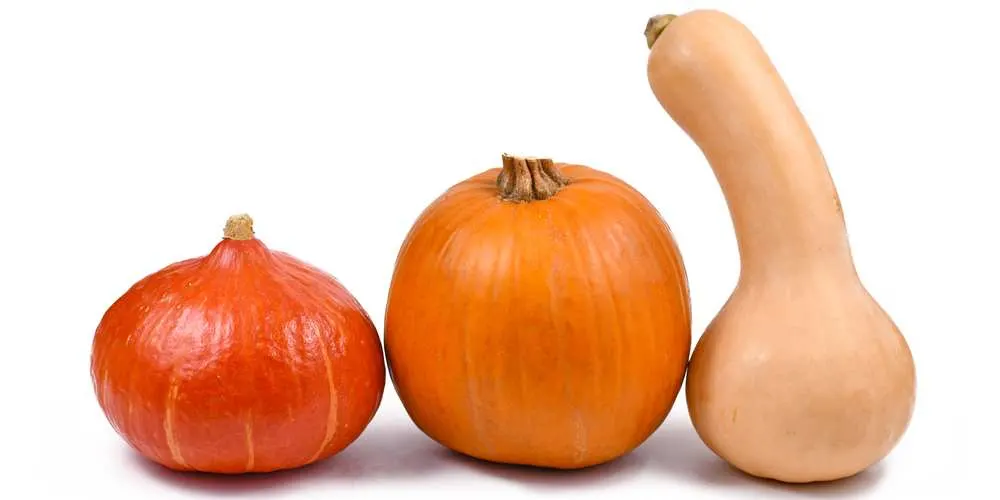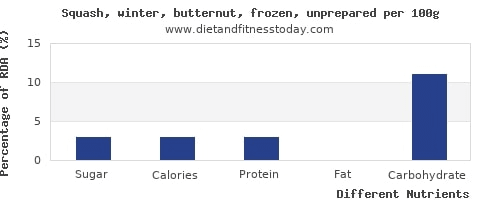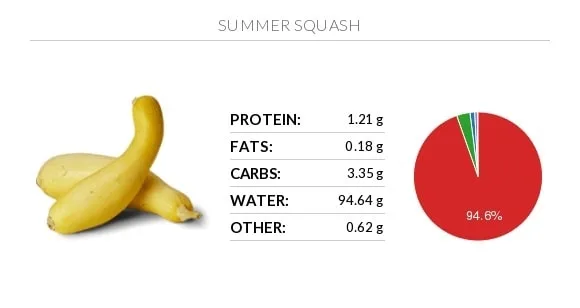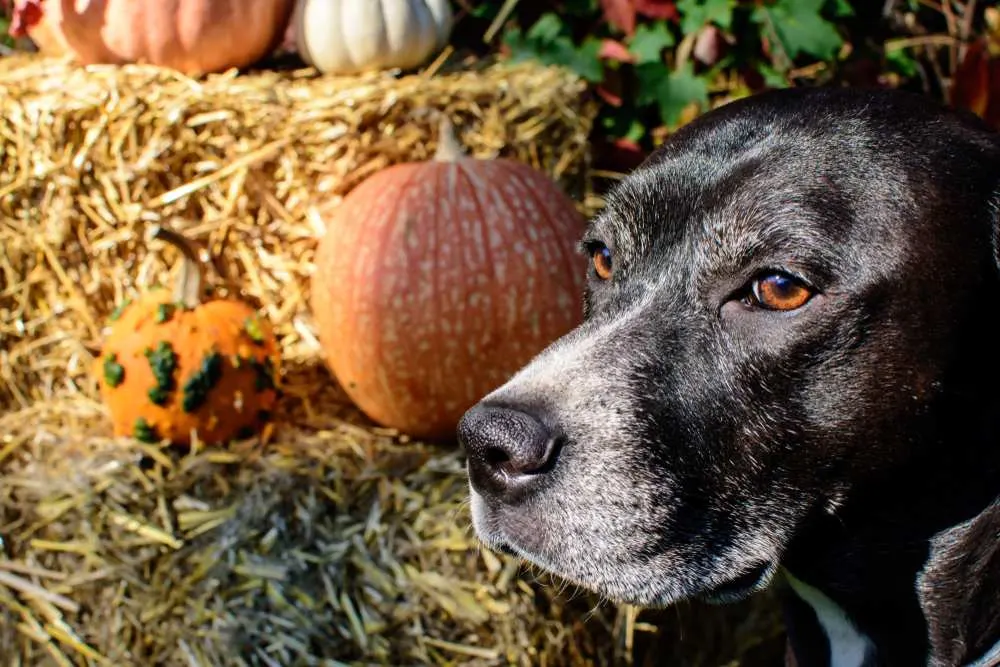Are vegetables good for your dog?
Dogs are omnivores, which means that their digestive system is “built” to handle both meat and plants. Therefore, a majority of vegetables are perfectly safe for your dog to enjoy. In fact, many veterinarians recommend a mixed diet for a healthy dog.
Veggies are a great way to enrich your pet’s diet and make it healthier as long as you make sure you stick to those that are safe for your four-legged friend. You also need to be careful and give your dog the appropriate amount of a particular vegetable, or you risk causing him or her digestive problems or even making him or her sick.
What about squashes? Can dogs eat squash?
We’ll answer that and tell you everything there is about feeding your dog with this healthy veggie!

Squash Defined
Squash is a rather broad term that stands for a whole family of plants. There are numerous varieties such as zucchini, butternut, yellow squash, pumpkin, acorn, delicata, kabocha, or the so-called spaghetti squashes.
The main problem is how to classify this plant.
Is Squash A Fruit Or A Vegetable?
Botanically, squash is a fruit. By definition, fruits have seeds and grow from the plant’s flowers, while vegetables are roots, stems, or leaves of a plant. All the squash varieties we have mentioned earlier grow from the plants’ flowers and have seeds of their own. Even the flowers that grow out of squash are edible and are known as squash blossoms.
Besides, the majority of squashes are bright-colored like fruits. On the other hand, their mild and savory taste is more similar to that of a vegetable.
The botanical definition is not accepted by all either, so there is no strict difference between fruits and vegetables. If we apply this definition to all plants, tomatoes, cucumbers, and eggplants will be considered veggies as well.
We should thus better rely on common sense. If you use and prepare a plant as a vegetable, then that’s what it is.
The squash is a vegetable by all the culinary rules. It is neither sweet nor can it be eaten raw like most fruit. It is prepared like a veggie in cooking.
Squash has a predominantly earthy flavor and is rarely found in desserts, except for a somewhat sweet pumpkin used in pies. It is treated as a savory ingredient and is usually used alongside other vegetables of similar taste.
Is Squash Healthy?
All winter squashes are rich in carotenoids – valuable compounds beneficial for humans and animals alike. The most famous of them all is beta carotene. It converts into Vitamin A – a precious vitamin for both you and your pet.
Squashes are also packed with numerous other helpful nutrients, compounds, vitamins, and minerals such as:
- Lutein
- Zeaxanthin
- Vitamin C
- Fiber
- Protein
- Magnesium
- Potassium
All these ingredients help keep you or your beloved dog healthy and in tip condition. They are even believed to reduce the risk of developing certain types of cancer and eye disease.
Unfortunately, there are no studies to back up these claims yet, but preliminary research is very promising. Even if the experts never confirm this health-boosting potential, you should still incorporate squashes into your daily diet plan. Why?
Due to its low glycemic index, squash is an excellent choice of food for people with diabetes but also people who strive to maintain a healthy weight. It keeps your blood sugar levels well-balanced and thus your appetite in check.

Moreover, squash is widely available during fall and winter. It is an affordable vegetable too, so there is no excuse not to have it in your pantry or fridge at all times. There are numerous varieties you can choose to match your taste and culinary skills.
Squash Varieties
You probably already often use and know a lot about pumpkins and zucchinis, but there are many more squash varieties:
| Butternut Squash: | Butternut squash might not be as popular as a pumpkin, but it is the sweetest variety of winter squash. When you peel it, you will discover a vibrant orange flesh – packed with the beneficial beta carotene. You can cut it into cubes and simmer it in vegetable broth or coconut milk. It makes a great and ultra-creamy butternut squash soup. |
| Spaghetti Squash: | Unfortunately, spaghetti squash does not taste like spaghetti at all. When cooked, it transforms into spaghetti-like “strings” and thus its name. You should best cut it in half, remove the seeds and roast it in the oven. Top it up with marinara sauce or any other sauce you like for the best taste! |
| Delicata Squash: | Delicata squash looks a lot like a cucumber. It has light and delicate skin, so there is no need to peel it! It has a slightly sweet taste and a somewhat starchy texture. It is easy to prepare – slice it in half, scoop out the seeds, and bake it. You can cover it with a bit of olive oil and sprinkle some salt to make it tastier. |
| Kabocha Squash: | Kabocha is a Japanese squash, so you cannot find it that easy. You can enjoy it in most Asian restaurants, though. It is usually deep-fried in tempura batter. It feels starchy and sticky when cooked and has a nutty, savory flavor that combines well with cheese and nuts. |
| Acorn Squash: | Acorn squash resembles an acorn – it is small and green. Its smooth yellow flesh has a mild taste so that you can combine it with almost anything. Its bowl-like structure makes it ideal for stuffing. You can use a combo of rice and meat crumbles and make it a main dish! |
| Hubbard Squash: | Hubbard squash is often used for decoration – its gray, blue, or green wart-covered skin makes it perfect for Halloween. This rough exterior hides a tender but not watery orange flesh that tastes starchy and sweet. You need to peel it, cut it into cubes, and roast it in your oven. A little bit of oil, salt, and rosemary will make it delicious. |
How To Eat Squash
As you could already see, most of the time, squash has to be either cooked or roasted before you can enjoy it. There are many ways to eat squash, especially if you consider that you can eat not only its flesh but also its skin, leaves, flowers, and seeds.
The good news is that squash is available year-round in most grocery stores and farmer’s markets. There are winter and summer squashes so that you can enjoy them no matter the season.

All squash varieties are highly nutritious and thus a healthy addition to your diet. Can you share some squash with your dog? Stay tuned to find out!

Can Dogs Eat Squash?
We have good news – squash is perfectly safe for your dog to munch upon. What’s more, it can be beneficial. No matter what squash variety you are planning to cook today, you can feel free to share it with your pet. None of the squash varieties will harm your pet.
What Is The Best Way To Serve Squash To Canines?
First of all, you need to cook squash! It’s a must.
If you serve it raw, your best friend can have problems digesting it. So, that would be a bad idea. Canines often have trouble breaking down veggies, especially if they eat them raw.
If you have never given your dog squash before, start by handing out small portions until he or she gets used to it. You can gradually increase the portions if all goes smoothly, and your dog grows to like squash.
The best method is to mix the squash with your dog’s usual meals. In this way, dogs are less likely to refuse to eat it and miss out on all its goodness.
So, the bottom line is that your four-legged friend should never eat squash in raw form. Dogs often find veggies tough on their stomach and cannot properly digest them. Your role is to enable optimal absorption of all the valuable nutrients so that your dog can have all the benefits the veggies bring to the table. So, a little bit of cooking here and there is a small price to pay, isn’t it?
Proper Squash Preparation For Pets: Step By Step Guide
- Peel the squash.
- Cut it in half and remove the seeds.
- Cut the squash into cubes (make them as small as needed based on your dog’s size).
- Let the cubes simmer in vegetable broth, water, or milk until they become soft.
- Optionally, you can turn the squash into a purée.
- Finally, mix in the cubes or puree into your dog’s favorite meal.
If you keep things simple and do not add new spices or additional ingredients, your dog should not mind this healthy addition to his regular diet. In time, once your pet gets used to the new flavor, you can be more creative and try to invent homemade squash recipes!
Why Should Your Dog Eat Squash?
We have already discussed how healthy squash is for humans and listed its healthy attributes. Still, let’s quickly touch on them again, and see what good will come to dogs if they eat squash.
First and foremost, vitamin A will do wonders for your canine friend. It has confirmed anti-inflammatory effects on humans and animals alike. If your dog is arthritic, squash can help him, or her get better.
All the other valuable nutrients we have listed such as beta-carotene, potassium, magnesium, folate, and vitamins C and E are great for pets too!

The Best Squash Recipe For Your Dog
If you want to be creative, you can try and make this simple yet delicious treat for your pet:
You’ll need:
- Butternut squash
- Two eggs
- Peanut butter
- Two different flours
The procedure:
- Peel the squash and remove the seeds
- Cook it in a little bit of water until it becomes soft and then puree it
- Let the puree cool off, and then add the eggs, a spoon or two of peanut butter, and enough flour to make the firm dough you can shape into dog biscuits
- Bake the biscuits until golden brown, let them cool, and share them with your best friend!
You can add a little bit of salt, but when it comes to other spices, be highly selective!
Learn More: What Can Dogs Eat? A Comprehensive List Of Dog-safe Foods

